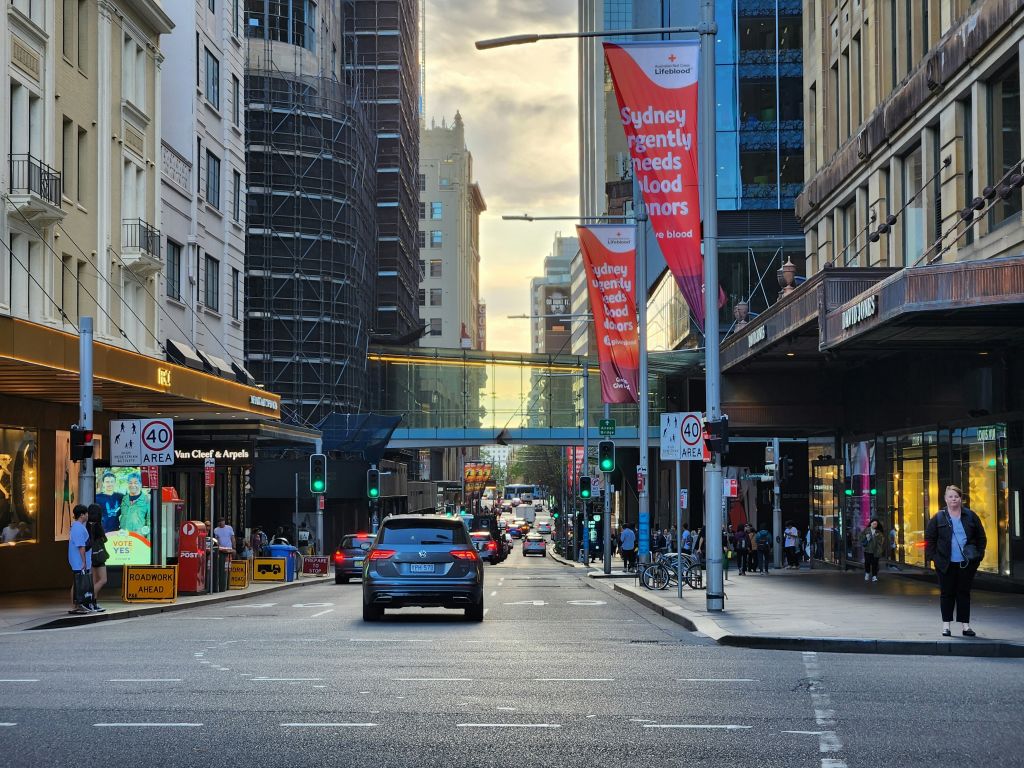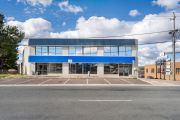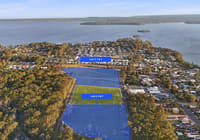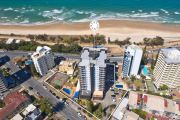
Sydney and Melbourne's retail hubs still in recovery mode
Brisbane, Adelaide and Perth are the only major Australian cities where foot traffic at major retail hubs has returned to pre-pandemic levels, with Sydney and Melbourne CBDs still in recovery mode.
A new retail report by Colliers has found that shoppers are only gradually returning to the city centres of Melbourne and Sydney, while major events, new developments, and store openings have revitalised Brisbane, Adelaide, and Perth.
Tourist numbers and people returning to work from their homes are expected to rise over the next six years, returning foot traffic levels to those above or equal to 2019.
Shopping in the cities will also be bolstered by a lack of retail spaces, which will drive competition among brands, according to The Streets Are Speaking Colliers Q4 CBD Retail Insights report.
“Constrained supply and steady rental growth are underpinning landlord confidence, while rising demand and tightening vacancies are creating healthy competition for space,” said Michael Tuck, Colliers head of retail leasing and advisory Australia.
“Increasing foot traffic, fuelled by population growth, tourism and productivity gains, is further strengthening the market.
“For consumers, this means more vibrant, diverse and experience-led retail precincts that reflect a renewed energy across our cities.”
A shortage of new developments in the construction pipeline is driving the lack of retail real estate, according to the report. It predicts Australia will need 2 million square metres – the equivalent of nine Chadstone shopping centres of retail – by 2035 to keep up with demand.
Although the number of people using public transport and working in offices is below pre-pandemic levels nationally, retail trade data shows monthly annual turnover is 35 per cent above what it was in 2019. This shows that while foot traffic across CBDs is still recovering, the retail market is in good health, and spending per person has increased.
Melbourne
Melbourne was hardest hit by the pandemic lockdowns and remains 22 per cent below its activity levels in December 2019.
Recent retail revamps have helped attract more shoppers, including the Bourke Street Mall, which has added major brands such as Mecca, Rodd & Gunn, PopMart, and JD Sports.
The new-look Melbourne train network, which includes five new stations, is expected to be launched later this year and inject more energy into the CBD.
Sydney
Foot traffic has returned to 84 per cent of pre-pandemic levels in large part to major infrastructure improvements, including the George Street light rail and the new Sydney Metro network.
Sydney’s CBD recovery has also been led by high-end luxury retail openings such as the flagship stores of Chanel and Montblanc.
Dining venues have also proved a city drawcard with a slate of new eateries opening their doors, including Grill Americano, which launches at 1 Chifly Square in November.
Brisbane
Preparations for the 2032 Olympics have sparked a wave of transformations that have helped the CBD surpass its pre-pandemic foot traffic levels.
Events such as the British and Irish Lions rugby union tour this year drew locals, as well as interstate and international visitors, into the city.
At the centre of the action is Queen Street Mall, which is seeing the positive impacts of new developments and openings, including Griffith University’s conversion of the heritage-listed Treasury Building into a new CBD campus and the opening of the global burger chain Wendy’s.
“Brisbane’s CBD is attracting increased attention as the 2032 Olympic Games position the city on the global stage,” said Chloe Lonergan, Colliers manager of retail leasing Brisbane CBD.
“Retailers are proactively securing strategic locations in anticipation of heightened demand leading up to the event.”
Perth
Perth’s population growth has been a key factor in its pandemic foot traffic rebound.
Population numbers have jumped by 12 per cent since 2019 – 5 per cent above the national average.
Foot traffic in the CBD has surpassed pre-pandemic levels, thanks to major projects such as Elizabeth Quay and the Enex Urban Commercial Village, which are driving visitation and retail spending.
Luxury brands have landed at Murray Street shopping mall, including Longines, while Apple opened in the old Commonwealth Bank building.
Adelaide
A huge events calendar has seen Adelaide’s CBD foot traffic levels surpass pre-pandemic figures to stage one of the nation’s strongest recoveries.
The Adelaide Fringe, WOMADelaide, LIV Golf, and the AFL Gather Round, combined with robust office demand, are underpinning strong city activity levels.
“Adelaide CBD retail is seeing significant change, with a range of premium brands exiting the CBD to open at Burnside Shopping Centre, including Tiffany & Co, Zimmerman, Morrison and Georg Jensen,” Sinamin Dominev, Colliers senior executive retail leasing Adelaide CBD.










